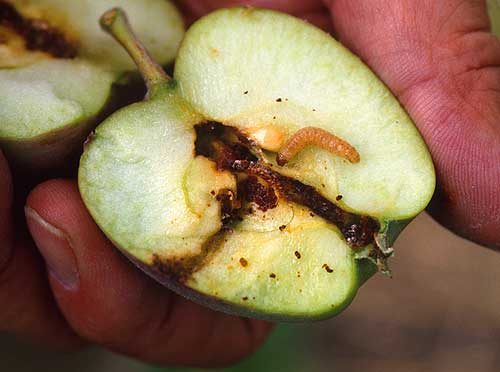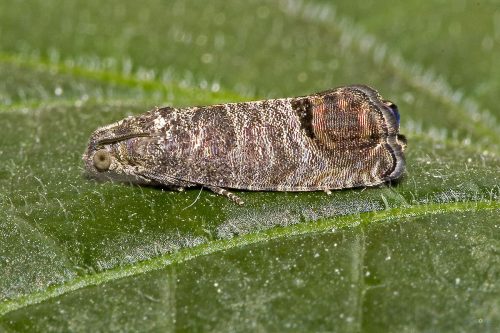Codling moth, this moth belonging to the leafrollers has a wingspan of 20 mm and overwinters as a caterpillar in the bark of a tree.
Codling moth (Cydia pomonella). This moth with a wingspan of 20 mm, belongs to the large family of leaf
Where to find
Control

Affected apples ripen earlier than usual (precocious). At the spot where the caterpillar has bored itself into the apple, a borehole is visible, covered with discolored apple pulp. Remove infested apples: this reduces the chances of the same caterpillar infesting other apples in the cluster.
Prevention
Provide birds in the garden: tits like to pick the caterpillars from the bark. Bats also catch codling moths because, like the bats, they are active at night.
A pheromone trap catches the male codling moths, so they cannot fertilize the female moths, so that no eggs are laid. The delta trap is most commonly used in the control of codling moth.
In the professional orchard, nematodes (roundworms) Steinernema carpocapsae are used for biological control (biopesticide) of codling moth.

